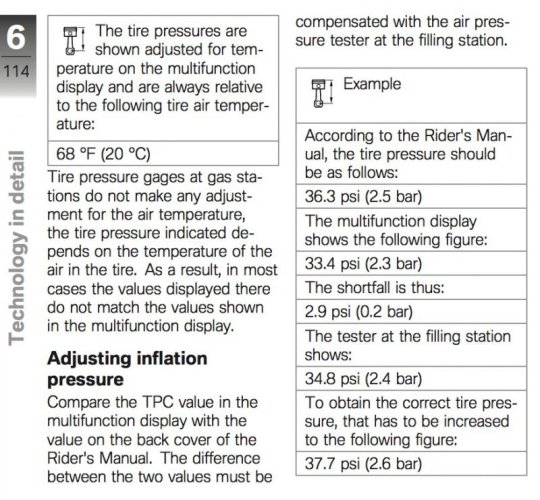If it was 88 the next day, instead of 58, and you checked your tire pressure expecting to see 44/38, would that still be right where you wanted it? Would you go ride with your tire pressures 2 pounds above the manufacturers recommendation, and the TPMS displaying 42/36, for a temperature 20 degrees below your current ambient?
If the treatise is sloppily written and admits to several different interpretations (including the correct one) then it also engenders sloppy application and invalid conclusions. If the author wants to change our expectation of what the TPMS will display, his examples go in the wrong direction. Implicit in the notion that the TPMS ought always show 42/36 is that the mass of air, or number of air molecules, be held constant across the ambient temperature range. Do we really want to believe that? That tire pressure should be independent of ambient air temperature, as long as a particular value is achieved at a particular temperature?
This is really a giant cluster.
If the treatise is sloppily written and admits to several different interpretations (including the correct one) then it also engenders sloppy application and invalid conclusions. If the author wants to change our expectation of what the TPMS will display, his examples go in the wrong direction. Implicit in the notion that the TPMS ought always show 42/36 is that the mass of air, or number of air molecules, be held constant across the ambient temperature range. Do we really want to believe that? That tire pressure should be independent of ambient air temperature, as long as a particular value is achieved at a particular temperature?
This is really a giant cluster.

